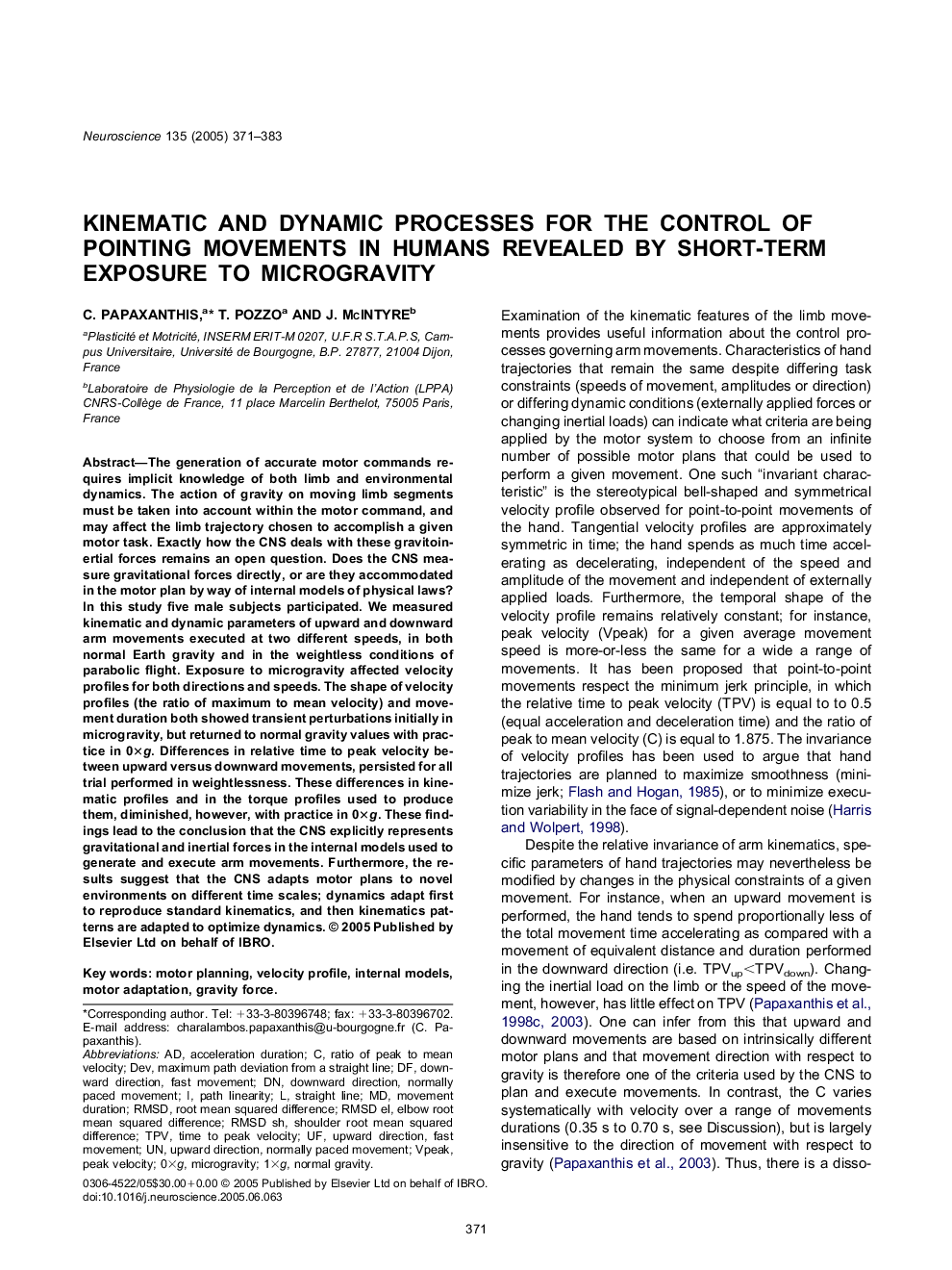| کد مقاله | کد نشریه | سال انتشار | مقاله انگلیسی | نسخه تمام متن |
|---|---|---|---|---|
| 9425460 | 1295874 | 2005 | 13 صفحه PDF | دانلود رایگان |
عنوان انگلیسی مقاله ISI
Kinematic and dynamic processes for the control of pointing movements in humans revealed by short-term exposure to microgravity
دانلود مقاله + سفارش ترجمه
دانلود مقاله ISI انگلیسی
رایگان برای ایرانیان
کلمات کلیدی
موضوعات مرتبط
علوم زیستی و بیوفناوری
علم عصب شناسی
علوم اعصاب (عمومی)
پیش نمایش صفحه اول مقاله

چکیده انگلیسی
The generation of accurate motor commands requires implicit knowledge of both limb and environmental dynamics. The action of gravity on moving limb segments must be taken into account within the motor command, and may affect the limb trajectory chosen to accomplish a given motor task. Exactly how the CNS deals with these gravitoinertial forces remains an open question. Does the CNS measure gravitational forces directly, or are they accommodated in the motor plan by way of internal models of physical laws? In this study five male subjects participated. We measured kinematic and dynamic parameters of upward and downward arm movements executed at two different speeds, in both normal Earth gravity and in the weightless conditions of parabolic flight. Exposure to microgravity affected velocity profiles for both directions and speeds. The shape of velocity profiles (the ratio of maximum to mean velocity) and movement duration both showed transient perturbations initially in microgravity, but returned to normal gravity values with practice in 0Ãg. Differences in relative time to peak velocity between upward versus downward movements, persisted for all trial performed in weightlessness. These differences in kinematic profiles and in the torque profiles used to produce them, diminished, however, with practice in 0Ãg. These findings lead to the conclusion that the CNS explicitly represents gravitational and inertial forces in the internal models used to generate and execute arm movements. Furthermore, the results suggest that the CNS adapts motor plans to novel environments on different time scales; dynamics adapt first to reproduce standard kinematics, and then kinematics patterns are adapted to optimize dynamics.
ناشر
Database: Elsevier - ScienceDirect (ساینس دایرکت)
Journal: Neuroscience - Volume 135, Issue 2, 2005, Pages 371-383
Journal: Neuroscience - Volume 135, Issue 2, 2005, Pages 371-383
نویسندگان
C. Papaxanthis, T. Pozzo, J. McIntyre,